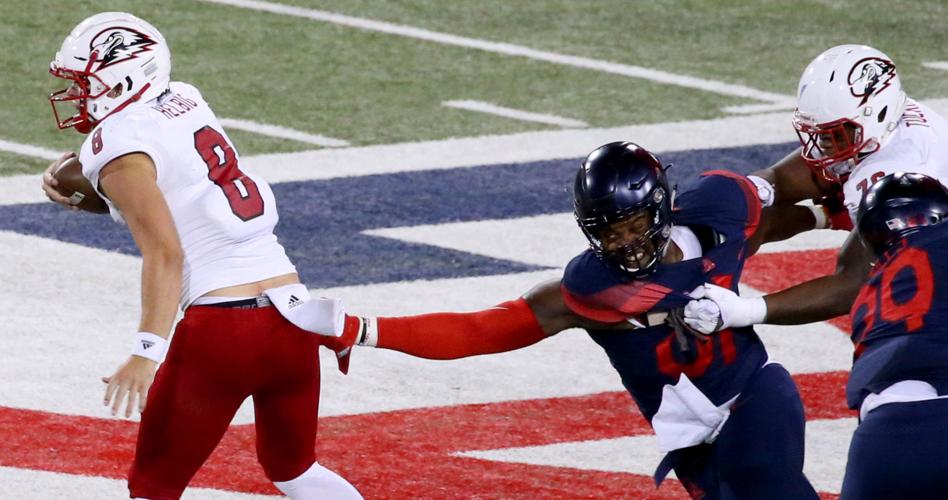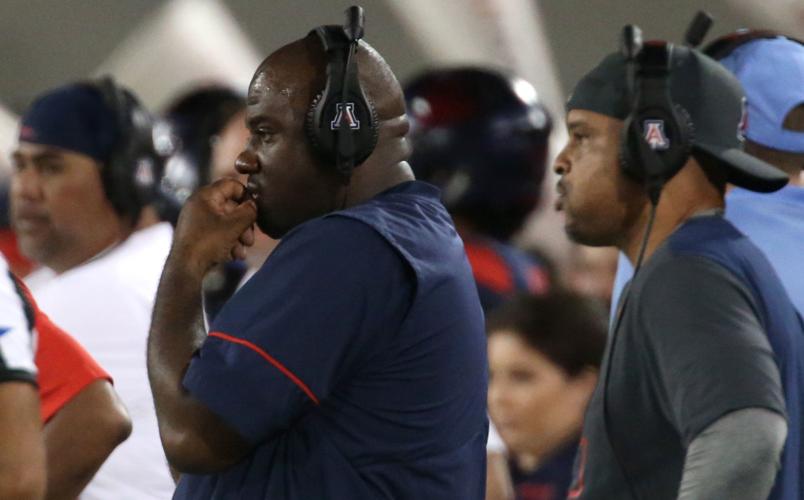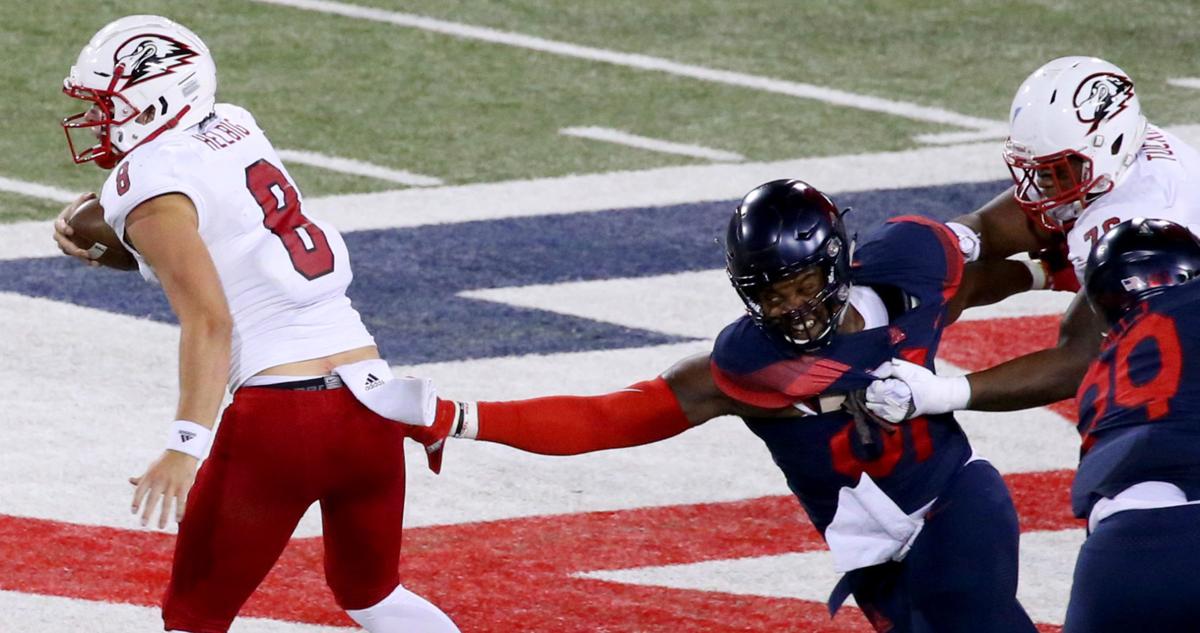Arizona’s third-down woes on defense aren’t a new problem. Nor is that problem easy to define or fix. If it were, the Wildcats would have done it already.
We examined every third down the UA defense has faced this season in search of a pattern. That deep dive revealed one area that’s particularly troubling and should be the biggest focus for defensive coordinator Marcel Yates and his staff.

Editor’s note
Each week throughout the football season, we’ll take an in-depth look at the Arizona Wildcats from a statistical perspective.
But before we get to that, let’s start with the basic numbers.
Arizona, which opens Pac-12 play Saturday at Oregon State, has allowed opponents to convert 44.2 percent of their third downs. That rate ranks 109th in the nation.
It’s nowhere close to what Yates or head coach Kevin Sumlin want, but it’s actually better than the final totals for Yates’ first two seasons. Last year, the Wildcats surrendered 46.7 percent (119th). In 2016, it was 52.6 percent (127th). At the very least, they’re trending in the right direction.
Arizona still has a long way to go to reach Sumlin’s benchmark.
“We talked as a team about goals,” he said. “Third down, offensively, you want to be 40 percent or better. We’ve been able to reach that (44.2 percent). Conversely, we have not met our goal on defense. That needs to be around 35 percent or lower.”
The numbers don’t include the six times UA foes have come within a yard of moving the chains, only to convert on fourth down. But we digress. Back to Sumlin.
“We’re looking at that plan, we’ve talked about it, what that looks like,” he said. “It’s different for different (opponents). But the bottom line is, we haven’t hit our goals. That’s kept them on the field and allowed them to score points.”

The Wildcats have improved in opponents’ third-down conversion percentage during coordinator Marcel Yates’ time in Tucson, but he wants that percentage to go even lower.
Never was that more evident than in the Southern Utah game last week. Although the Cats ended up winning easily, the Thunderbirds ran 98 plays and controlled the clock. They converted 10 of 22 third downs and 5 of 6 fourth downs.
Twenty-two third-down attempts is a lot. Over the previous five seasons, UA opponents have had 20 or more only four times.
For the season, Arizona’s defense has faced 52 third downs. That’s the fourth most in the nation among teams that have played three or fewer games.
That figure can be looked at in two ways. The positive: The Wildcats are forcing opponents into third-down situations. The negative: Opponents are converting them too often to extend drives.
Sumlin noted this week that Arizona has been an equal-opportunity defense, yielding first downs in short-, medium- and long-yardage scenarios. “It’s been all three,” Sumlin said.
While technically true, one of the three is an outlier. The Wildcats have been especially substandard in third-and-long situations.
Logic dictates that the longer the distance, the harder it should be to convert. The data supports that contention.
A few years ago, SB Nation’s Football Study Hall examined third-down success rate by distance. The site looked at conversion rates over a five-year period from 2008-12
As expected, the percentage plummeted as the distance to go increased. For 1-3 yards, the percentage ranged from 71.2 to 50.9. For 4-6 yards, it went from 46.6 to 38.4. For 7-10 yards, 35.1 to 27.4.
How do the 2018 Wildcats fit into that? UA opponents have converted 63.6 percent (7 of 11) of their third downs when needing 1-3 yards. They’ve converted 33.3 percent (4 of 12) when needing 4-6 yards. The former is within acceptable parameters; the latter is better than average.
When opponents need 7 or more yards on third down, they’re converting 41.4 percent of the time – well above the norm. Arizona has faced more third-and-long situations – 29 – than short and medium combined. Opponents have converted 12 of those, with 10 coming via the pass.
If you want to condense all the third-down issues into one glaring deficiency, the Wildcats’ lack of a consistent pass rush is where you’ll land.
Arizona did not record a sack in either of its first two games and has just two for the season. Pro Football Focus has given the Wildcats an overall pass-rush grade of 55.0, which ranks 125th in the nation.
Asked what’s behind Arizona’s third-down troubles, defensive end Jalen Cochran said: “The sense of urgency to get to the quarterback. It’s not like we can’t do it. We just need more.”
The Wildcats should have opportunities against the Beavers. Oregon State has surrendered 11 sacks, second most in the Pac-12.
The OSU offense ranks 10th in third-down conversion rate, coming in at 31 percent. If there’s ever an opportunity for Arizona’s defense to stop the bleeding by getting third-down stops, this is it.
If the trend continues throughout the season for a defense that was supposed to take a quantum leap this year, Yates could succumb to what has eluded his group far too often.
He could go three-and-out.







